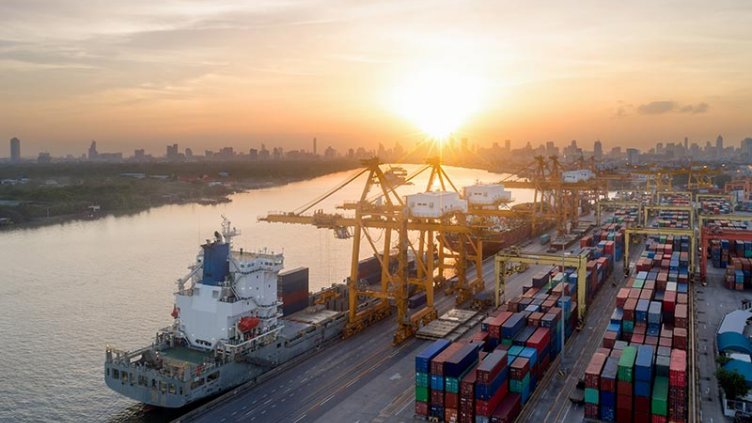APAC: the epicenter of luxury retail
This blog focuses on the drivers of luxury retail in Asia Pacific and why luxury brands will continue to need physical retail space.
The Asia Pacific region (APAC) leads the world in personal luxury goods consumption, with fashion, leather goods, jewelry and watches, as well as cosmetics & fragrance sales topping an estimated US$199 billion in 2024. China and Japan alone account for roughly 60% of this demand. To put this in perspective, the luxury goods market totalled US$126 billion in Europe and US$113 billion in North America, according to Statista Market Insights. The passion for luxury consumption in APAC partly reflects the value that consumers place on high-quality, high-status products as a means of social expression.
The top five international luxury groups (LVMH, Richemont, Hermès, Chanel and Kering) account for roughly 40% market share in the region, with the remaining share distributed among other global and local luxury brands1. While Q1 2025 financial results from leading brands indicated short-term weakness, the overall outlook remains strong. Regional sales of luxury goods are expected to increase from US$199 billion in 2024 to US$256 billion in 2029, or a CAGR of 5%. This is higher than the 2025-29 CAGR of between 2%-4% in Europe, North America and Middle East.
The main driver for luxury goods sales is a growing affluent population in the region, as higher income typically translates into increased luxury spending. Even amidst economic uncertainty, the number of affluent households in APAC is projected to grow at an impressive 8.3% CAGR over the next five years - six times the rate of the rest of the world2.
Mirroring trends in the broader retail market, e-commerce is influencing the luxury shopping experience, prompting brands to boost their digital strategies alongside physical stores. Even though online channels are growing, brick-and-mortar stores remain key. In APAC, online sales account for an estimated 10% of all luxury goods sales, significantly less than the 19% share in the overall retail market.
Ultimately, luxury shopping is an experience where consumers not only pay a premium for high-quality goods, but also the personalized service. Physical retail is essential for creating immersive experiences and promoting:
- Brand awareness: Physical stores boost local brand visibility through personal events, partnerships, and social media, building a strong brand presence.
- Tactile experience: While online shopping offers convenience, luxury consumers crave the tangible connection of touching and feeling products before purchase. Stores offer an immersive experience that e-commerce can’t replicate.
- Brand legitimacy: Physical storefronts signal legitimacy and build consumer trust, important for reassuring customers about the authenticity of their purchases.
As such, many luxury brands see physical retail as a worthwhile investment. JLL's 2024 luxury report found that two-thirds of luxury street retail in the US continues to be centered around prime corridors, because luxury brands want to be where their clientele are3.
In recent years, there is a host of flagship or maison luxury store openings in the region, mainly in prominent shopping districts such as Gangnam in Seoul, Ginza and Omotesando in Tokyo, and Orchard Road in Singapore. Even in Hong Kong, where overall retail sales have been declining, many luxury brands are demonstrating confidence in the market by revitalizing stores. A collection of renowned luxury labels has committed to the renovation of a luxury development in the heart of Hong Kong’s Central District4.
Luxury brands are also exploring opportunities to expand their offerings in emerging Asia Pacific as well, drawn by their growing economies and expanding population of high net-worth individuals. Recent examples of notable openings include Louis Vuitton's "LV The Place Bangkok" and Dior's striking new "DIOR Gold House" concept store in Bangkok's Ploenchit district.
Driven by growing luxury demand, new foreign brands are entering the Indian market, encompassing categories including beauty, cosmetics and wellness, fashion and accessories. In general, international brands are likely to explore opportunities but focus on key locations in major cities, with luxury malls such as Jio World Plaza in Mumbai and DLF Emporio in Delhi that showcase a range of prestigious brands.
Given the sustained positive sentiment of consumers in APAC toward luxury goods, coupled with growing demand for experiential luxury, physical retail is poised to remain foundational to luxury brands seeking success in the region. Confidence in the region's prospects will drive further investment from luxury brands and retailers.
Figure 1: Share of personal luxury goods market in Asia Pacific (breakdown by company/category)
Source: Statista Market Insights, May 2025
Note: Cosmetics & Fragrances (L'Oréal Luxe and Estée Lauder). Watches (Rolex & Swatch Group).
Gold & Jewellry (Chow Tai Fook, Lao Feng Xiang, China National Gold Group Gold Jewelry, Malabar Gold & Diamonds).
Figure 2: Share of personal luxury goods market in Asia Pacific (breakdown by country)
Source: Statista Market Insights, May 2025
Note: Personal luxury goods refer to fashion, leather goods, jewelry and watches, as well as cosmetics & fragrances.
1 Data/forecasts in this article are sourced from Statista Market Insights, May 2025, unless otherwise stated.
2 Affluent households are defined as households with annual income band of US$100,000– US$150,000 (PPP constant 2015 prices), Oxford Economics, May 2025.
3 Shaping luxury’s future: Trends in U.S. luxury real estate, JLL, 2024.
4 Various news sources.



